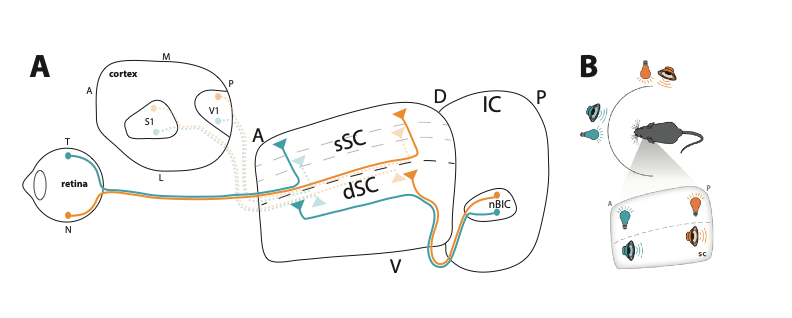David Feldheim
| Professor of MCD Biology B. S., University of California, San Diego Ph.D., University of California, Berkeley Postdoctorate, Harvard Medical School |
Mammalian Brain Development
The Feldheim lab is interested in how sensory maps of space are created and combined during development to create a unified perception of the outside world. Integrating stimuli from different modalities that occur in the same place and time improves our ability to identify and respond to objects. This type of sensory integration is an important brain function, and its deficits are known symptoms of patients with autism, schizophrenia, and other neurodevelopmental disorders Therefore, understanding how multisensory integration develops and functions will allow us to better understand and treat these diseases. We use a combination of mouse genetics, electrophysiology, and modern circuit manipulation techniques to understand the genetic and activity dependent mechanisms use to create and integrate sensory maps in the mammalian brain.

Figure 1. Alignment of visual and auditory maps in the Superior Colliculus. (A) The mouse SC is an integrative structure that receives visual inputs from the retina and V1 in the superficial SC (sSC), sensory inputs from S1, and auditory inputs from the nBIC in the deep SC (dSC). (B) This results in the alignment and integration of the receptive fields of individual neurons that are located in the same part of the SC. Each projection is mapped topographically and in register. Adapted from (Cang and Feldheim, 2013).
Please follow this link to find the lab's publications in the National Library of Medicine's PubMed database.
